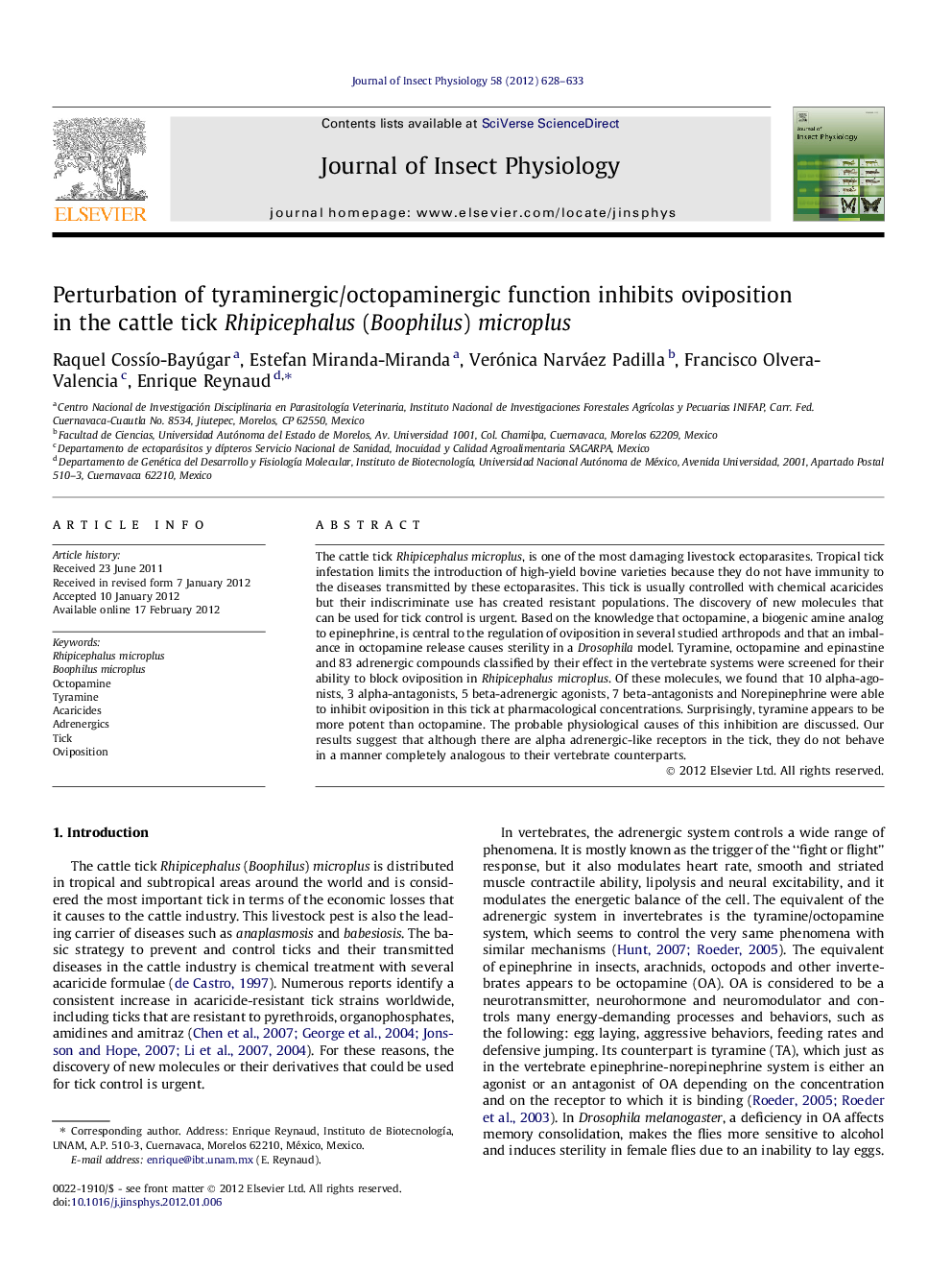| Article ID | Journal | Published Year | Pages | File Type |
|---|---|---|---|---|
| 5922148 | Journal of Insect Physiology | 2012 | 6 Pages |
The cattle tick Rhipicephalus microplus, is one of the most damaging livestock ectoparasites. Tropical tick infestation limits the introduction of high-yield bovine varieties because they do not have immunity to the diseases transmitted by these ectoparasites. This tick is usually controlled with chemical acaricides but their indiscriminate use has created resistant populations. The discovery of new molecules that can be used for tick control is urgent. Based on the knowledge that octopamine, a biogenic amine analog to epinephrine, is central to the regulation of oviposition in several studied arthropods and that an imbalance in octopamine release causes sterility in a Drosophila model. Tyramine, octopamine and epinastine and 83 adrenergic compounds classified by their effect in the vertebrate systems were screened for their ability to block oviposition in Rhipicephalus microplus. Of these molecules, we found that 10 alpha-agonists, 3 alpha-antagonists, 5 beta-adrenergic agonists, 7 beta-antagonists and Norepinephrine were able to inhibit oviposition in this tick at pharmacological concentrations. Surprisingly, tyramine appears to be more potent than octopamine. The probable physiological causes of this inhibition are discussed. Our results suggest that although there are alpha adrenergic-like receptors in the tick, they do not behave in a manner completely analogous to their vertebrate counterparts.
Graphical abstractDownload full-size imageHighlights⺠Alpha and beta-adrenergic ligands inhibit oviposition in R. microplus. ⺠Different phenotypes caused by different ligands can be observed on the ticks. ⺠Tyramine seems to be more prominent on the control of oviposition in R. microplus. ⺠In the tick, oviposition is more strongly inhibited by tyramine than by octopamine. ⺠The reported R. microplus octopamine receptor is most likely a tyramine receptor.
